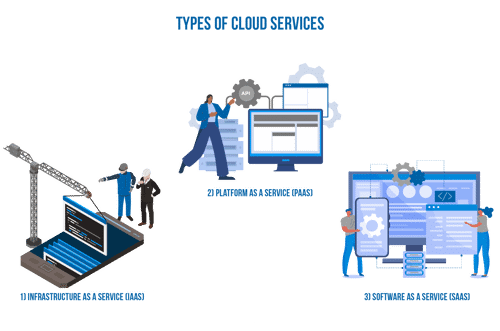How Cloud Computing is changing the Business World

Do you remember the world before cloud computing? There was no efficiency and mobility because the data was stored using traditional bookkeeping methods where people had to be at that location if they wanted to read books. The data was the most vulnerable thing at that time. It was necessary to secure the data and store it digitally.
The amount of data to be processed is increasing day by day. It is crucial to analyze the data regularly to extract valuable insights. The IT department should adopt advanced data storing methods such as cloud computing.
Why are businesses adopting Cloud?
Cloud simplifies the fast-moving secret information in both directions: across computing with virtualization technology and scale up / down to effectively handle large tasks and a high level of security across thousands of computer systems.
Organizations are changing the needs of their business in terms of ever-changing technologies so that they can compete in a competitive online world. Companies have different reasons for using the cloud but most importantly lower costs because they do not need to hire resources to increase their computational capacity.

Types of Cloud Services
1) Infrastructure as a Service (IaaS)
IaaS is useful for a variety of business applications including testing and development, website hosting, high-performance computers and big data analysis. Cloud flexibility allows development teams to quickly set up testing and development sites. The cloud also enables companies to perform tasks that require a large amount of computer power without having to host site infrastructure.
2) Platform as a Service (PaaS)
PaaS development tools can also help reduce coding time due to pre-coded components built into the platform such as search, security features, guide services, workflow and more. They can use tools to upgrade many platforms, such as computers, browsers and mobile devices. It also enables affordable access to advanced development tools through the pay-as-you-go model.
3) Software as a Service (SaaS)
If you are using a SaaS system, you do not need to install it on basic devices, and you do not need to manage the underlying infrastructure that makes the system work. CSP handles all of these things including application software, hardware, middle ware, and data. Depending on the service agreement, CSP can also ensure the security of your application’s data. SaaS reduces the previous costs and delivery time required to start implementing a new system.
Companies have various reasons for cloud adoption, here are some of them:
- Enhanced Flexibility
- Stronger security measures
- Cost-effectiveness
- Real-time customer feedback
- Operational Improvements
Benefits of cloud computing
- Enhanced Customer Experience
- Strong Security
- Working from anywhere
- Disaster Recovery
- Automated updates
To improve speed, and flexibility, organizations switch to cloud and implement cloud-based improvements. But going to the cloud brings new challenges. New skills, processes, and resources are needed to manage, manage, and maintain applications in any cloud environment. Managed cloud services can help. For more information on cloud computing you can contact us on info@naapbooks.com

















